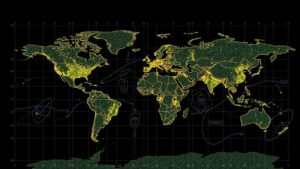Decoding Historic Cartouches for Hidden Symbolism in Treasure Maps
Decoding Historic Cartouches for Hidden Symbolism in Treasure Maps
The exploration of historic cartouches, particularly in the context of treasure maps, provides fascinating insights into the cultural and operational frameworks of the time. Cartouches, which are ornate frames surrounding a name or title, were often employed in historical cartography to convey not just identity but also coded messages and symbolism. This article examines the significance of these elements in treasure mapping, utilizing case studies from the Age of Exploration and Colonial periods to reveal how hidden meanings influenced pursuit and possession of treasure.
The Historical Context of Cartouches
Cartouches emerged during the Renaissance, a period marked by expeditions and the vast expansion of European powers across the globe. Notable examples include maps produced by cartographers such as Gerardus Mercator and Abraham Ortelius, which utilized cartouches to enrich their visual narratives. For example, the Mercator World Map of 1569 features elaborate cartouches that often contained both decorum and “labels†for locations, effectively blending artistry with geographic detail.
Symbolism Embedded in Cartouches
Cartouches often contain symbols that convey deeper meanings. For example, in various European maps from the 17th century, cartouches would sometimes include mythical creatures or indigenous motifs reflective of the region being mapped. An example can be found in the 1635 map of New England by John Smith, which showcases a cartouche featuring an indigenous figure holding a bow, symbolizing the relationship–and tension–between colonizers and Native Americans.
- Mythical Creatures: Often a representation of local beliefs or warnings against the unknown.
- Natural Elements: Rivers, mountains, and flora depicted within cartouches often symbolize geographical treasures or barriers.
- Human Figures: These characters can signify encounters or stories significant to the locales represented.
Decoding Hidden Messages
Deciphering the layers of meaning within cartouches is akin to understanding a multi-dimensional puzzle. For example, the cartouche on the Treasure Map of Oak Island, which dates back to the 18th century, reflects not only the names of potential treasure owners but also incorporates alchemical symbols that are thought to denote the location of buried treasure linked to the Knights Templar. This illustrates how the use of cartouches can encode secret knowledge and serve as guides to hidden riches.
Case Study: The Vinland Map
The Vinland Map, allegedly dating back to the 15th century and associating Viking expeditions in North America, displays a cartouche featuring the name “Vinland†framed by elaborate scrollwork. Scholars debate the authenticity of the map, but its cartouche is notable for its symbolic representation of Nordic exploration and claims to territory. The historical discrepancies surrounding its authenticity reflect broader issues related to treasure hunting and claims of discovery, as they often hinge upon the interpretation of such cartographic symbols.
Real-World Applications: Modern Cartography and Treasure Hunting
In contemporary treasure hunting, understanding historic cartouches can play a crucial role in the identification and location of treasure. Modern cartographers and historians utilize advanced technologies such as Geographic Information Systems (GIS) and digital mapping to further decode historic maps. For example, treasure seekers on Oak Island are now using these techniques to overlay historical cartographic data with current topography to locate potential treasure sites accurately.
Conclusion and Actionable Takeaways
While historic cartouches may seem to serve decorative purposes at first glance, their layered meanings and coded messages provide invaluable insights into the socio-political dynamics of historical periods and the geography of treasure hunting. Understanding these intricacies can enhance both academic studies and practical treasure hunting endeavors. Scholars, treasure hunters, and enthusiasts alike can benefit from a thorough study of cartographic symbols and their contexts.
As further research is conducted and technologies evolve, the potential for discoveries based on the interpretation of cartouches will only grow. For those interested in delving into this relatively unexplored area, a comprehensive analysis of historic cartography, combined with a critical examination of sociocultural contexts, will provide a strong foundation for revealing the wealth of knowledge embedded within these enchanting frames.


